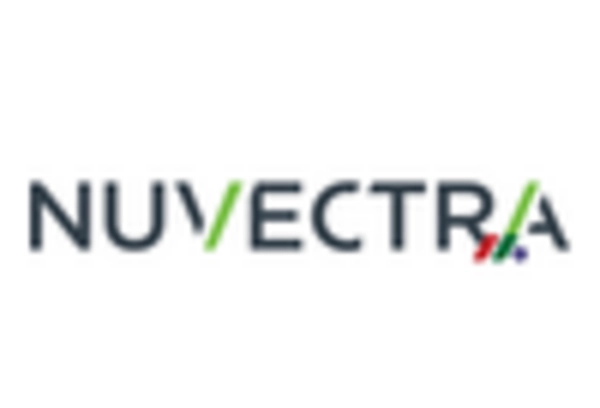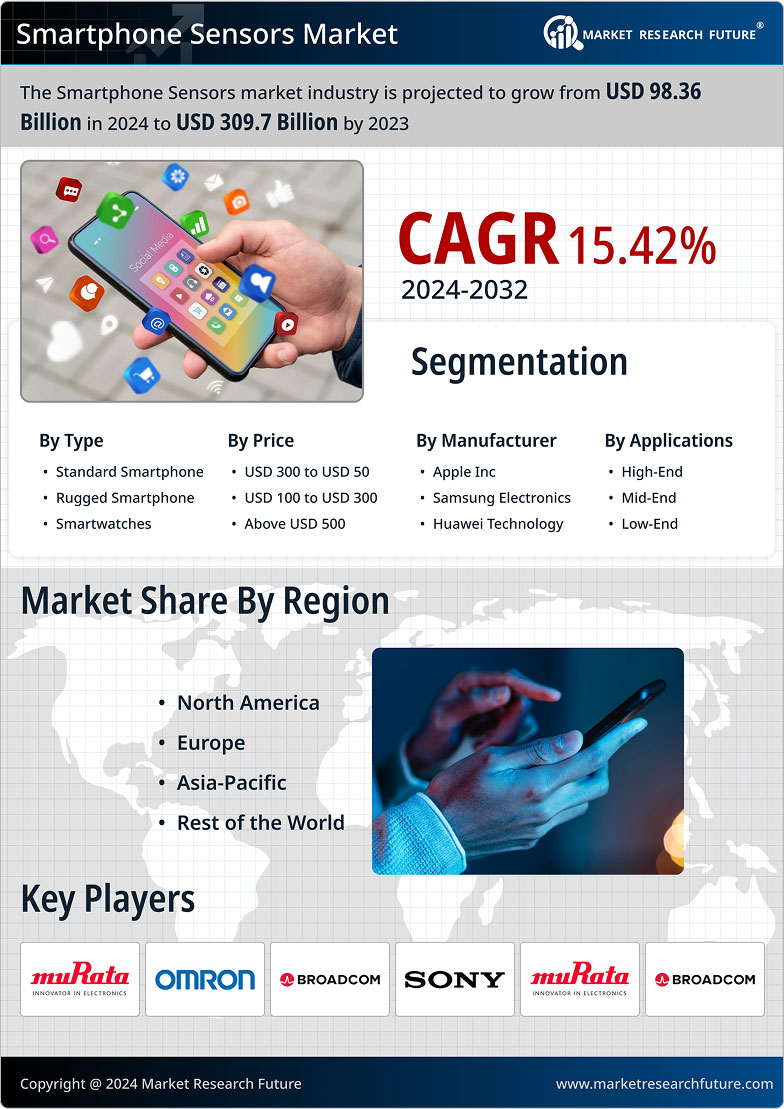-
EXECUTIVE SUMMARY
-
EXECUTIVE SUMMARY
-
OVERVIEW
-
MARKET INTRODUCTION
-
DEFINITION
-
SCOPE OF THE STUDY
-
RESEARCH OBJECTIVE
-
MARKET STRUCTURE
-
ASSUMPTIONS &
-
LIMITATIONS
-
RESEARCH METHODOLOGY
-
DATA MINING
-
SECONDARY RESEARCH
-
PRIMARY RESEARCH
-
BREAKDOWN OF PRIMARY RESPONDENTS
-
FORECASTING TECHNIQUES
-
RESEARCH METHODOLOGY FOR MARKET SIZE ESTIMATION
- BOTTOM-UP APPROACH
- TOP-DOWN APPROACH
-
DATA TRIANGULATION
-
VALIDATION
-
MARKET DYNAMICS
-
OVERVIEW
-
DRIVERS
- INCREASING DEMAND
- RISE IN CASES OF NERVE INJURIES
- GROWING DEMAND FOR WIRELESS PERIPHERAL NERVE
- HIGH COST ASSOCIATED WITH
-
FOR PERIPHERAL NERVE STIMULATORS
-
STIMULATORS
-
RESTRAINTS
-
LACK OF TECHNICAL SKILLS FOR INSTALLATION AND CONTROL OF A DEVICE
-
THE PERIPHERAL NERVE STIMULATORS DEVICES
-
OPPORTUNITIES
- GROWING TECHNOLOGICAL ADVANCEMENTS
-
MARKET FACTOR ANALYSIS
-
VALUE CHAIN ANALYSIS
- R&D & DESIGNING
- MANUFACTURING
- DISTRIBUTION &
- THREAT OF NEW ENTRANTS
- BARGAINING POWER OF SUPPLIERS
- THREAT OF SUBSTITUTES
- BARGAINING POWER
-
SALES
-
POST-SALES MONITORING
-
PORTER''S FIVE FORCES MODEL
-
OF BUYERS
-
INTENSITY OF RIVALRY
-
IMPACT OF COVID-19 ON THE GLOBAL PERIPHERAL NERVE STIMULATORS MARKET
-
GAP
-
IMPACT ON SUPPLY CHAIN
-
IMPACT ON PRICING
-
IMPACT ON REGIONS
-
IMPACT ON PRODUCTION
-
IMPACT ON DEMAND-SUPPLY
-
GLOBAL
-
PERIPHERAL NERVE STIMULATORS MARKET, BY PRODUCT
-
OVERVIEW
-
TRANSCUTANEOUS
-
PERCUTANEOUS
-
IMPLANTABLE
-
GLOBAL PERIPHERAL NERVE STIMULATORS MARKET, BY
-
DEVICE TYPE
-
OVERVIEW
-
STIMULATORS
-
CPNB CATHETERS
-
PAIN PUMPS
-
OTHERS
-
GLOBAL
-
PERIPHERAL NERVE STIMULATORS MARKET, BY STIMULATING FEATURE
-
OVERVIEW
-
STIMULATOR MACHINES WITH TRAIN OF FOUR (TOF)
-
MONITORING FEATURES
-
MACHINES WITHOUT TOF FEATURES
-
GLOBAL PERIPHERAL NERVE STIMULATORS MARKET, BY END USER
-
OVERVIEW
-
HOSPITAL & CLINICS
-
AMBULATORY SURGERY
-
CENTERS
-
OTHERS
-
GLOBAL
-
PERIPHERAL NERVE STIMULATORS MARKET, BY REGION
-
OVERVIEW
-
NORTH AMERICA
- NORTH AMERICA
- US
- CANADA
-
EUROPE
- GERMANY
- FRANCE
- UK
- ITALY
- SPAIN
- REST OF EUROPE
-
ASIA-PACIFIC
- CHINA
- INDIA
- JAPAN
- SOUTH KOREA
- AUSTRALIA
- REST OF ASIA-PACIFIC
-
REST OF THE WORLD
- MIDDLE EAST
- AFRICA
- LATIN AMERICA
-
OVERVIEW
-
COMPETITIVE BENCHMARKING
-
MAJOR GROWTH STRATEGY IN THE GLOBAL PERIPHERAL
-
NERVE STIMULATORS MARKET
-
THE LEADING PLAYER IN TERMS OF THE NUMBER OF DEVELOPMENTS IN THE
-
GLOBAL PERIPHERAL NERVE STIMULATORS MARKET
-
KEY DEVELOPMENT ANALYSIS
-
KEY DEVELOPMENTS & GROWTH STRATEGIES
- PRODUCT APPROVAL
- RESEARCH & DEVELOPMENT EXPENDITURE (USD MILLION), 2021
-
AND PRODUCT LAUNCH
-
FINANCIAL MATRIX
-
SALES (USD MILLION), 2021
-
COMPANY PROFILES
-
MEDTRONIC
- COMPANY OVERVIEW
- FINANCIAL OVERVIEW
- PRODUCTS OFFERED
- KEY DEVELOPMENTS
- SWOT ANALYSIS
- KEY STRATEGIES
-
B. BRAUN SE
- COMPANY OVERVIEW
- FINANCIAL OVERVIEW
- PRODUCTS OFFERED
- KEY DEVELOPMENTS
- SWOT ANALYSIS
- KEY STRATEGIES
-
BOSTON SCIENTIFIC
-
CORPORATION
-
COMPANY OVERVIEW
-
FINANCIAL OVERVIEW
-
PRODUCTS OFFERED
-
KEY DEVELOPMENTS
-
SWOT ANALYSIS
-
KEY STRATEGIES
-
CURONIX LLC
-
COMPANY OVERVIEW
-
FINANCIAL OVERVIEW
-
PRODUCTS OFFERED
-
KEY DEVELOPMENTS
-
KEY STRATEGIES
-
SPR THERAPEUTICS
-
COMPANY OVERVIEW
-
FINANCIAL OVERVIEW
-
PRODUCTS OFFERED
-
KEY DEVELOPMENTS
-
KEY STRATEGIES
-
AVNS
-
COMPANY OVERVIEW
-
FINANCIAL OVERVIEW
-
PRODUCTS OFFERED
-
KEY DEVELOPMENTS
-
SWOT ANALYSIS
-
KEY STRATEGIES
-
TELEFLEX INCORPORATED
-
COMPANY OVERVIEW
-
FINANCIAL OVERVIEW
-
PRODUCTS OFFERED
-
KEY DEVELOPMENTS
-
SWOT ANALYSIS
-
KEY STRATEGIES
-
SUNMED
-
COMPANY OVERVIEWS
-
FINANCIAL OVERVIEW
-
PRODUCTS OFFERED
-
KEY DEVELOPMENTS
-
KEY STRATEGIES
-
XAVANT TECHNOLOGY (PTY) LTD
-
COMPANY OVERVIEW
-
FINANCIAL OVERVIEW
-
PRODUCTS OFFERED
-
KEY DEVELOPMENTS
-
KEY STRATEGIES
-
VYGON
- COMPANY OVERVIEW
- FINANCIAL OVERVIEW
- PRODUCTS OFFERED
- KEY DEVELOPMENTSS
- KEY STRATEGIES
-
APPENDIX
-
REFERENCES
-
The Foundation for Peripheral Neuropathy
-
Peripheral Nerve
-
Society (PNS)
-
American Neurological Association (ANA)
-
American Association of Neurological Surgeons
-
American Society
-
for Peripheral Nerve (ASPN)
-
British Peripheral Nerve Society (BPNS)
-
Pan African Association of Neurological Sciences
-
(PAANS)
-
The Neurological Association of South Africa (NASA)
-
RELATED REPORTS
-
-
LIST OF TABLES
-
LIST OF ASSUMPTIONS & LIMITATIONS
-
PRIMARY INTERVIEWS
-
AND INFORMATION GATHERING PROCESS
-
GLOBAL PERIPHERAL NERVE STIMULATORS MARKET, BY PRODUCT, 2019–2032
-
(USD MILLION)
-
TABLE
-
GLOBAL PERIPHERAL NERVE STIMULATORS MARKET, FOR TRANSCUTANEOUS, BY REGION, 2019–2032
-
(USD MILLION)
-
TABLE
-
GLOBAL PERIPHERAL NERVE STIMULATORS MARKET, FOR PERCUTANEOUS, BY REGION, 2019–2032
-
(USD MILLION)
-
TABLE
-
GLOBAL PERIPHERAL NERVE STIMULATORS MARKET, FOR IMPLANTABLE, BY REGION, 2019–2032
-
(USD MILLION)
-
TABLE
-
GLOBAL PERIPHERAL NERVE STIMULATORS MARKET, BY DEVICE TYPE, 2019–2032 (USD
-
MILLION)
-
TABLE
-
GLOBAL PERIPHERAL NERVE STIMULATORS MARKET, FOR STIMULATORS, BY REGION, 2019–2032
-
(USD MILLION)
-
TABLE
-
GLOBAL PERIPHERAL NERVE STIMULATORS MARKET, FOR CPNB CATHETERS, BY REGION, 2019–2032
-
(USD MILLION)
-
TABLE
-
GLOBAL PERIPHERAL NERVE STIMULATORS MARKET, FOR PAIN PUMPS, BY REGION, 2019–2032
-
(USD MILLION)
-
TABLE
-
GLOBAL PERIPHERAL NERVE STIMULATORS MARKET, FOR OTHERS, BY REGION, 2019–2032
-
(USD MILLION)
-
TABLE
-
GLOBAL PERIPHERAL NERVE STIMULATORS MARKET, BY STIMULATING FEATURE, 2019–2032
-
(USD MILLION)
-
TABLE
-
GLOBAL PERIPHERAL NERVE STIMULATORS MARKET, FOR STIMULATOR MACHINES WITH TRAIN
-
OF FOUR (TOF) MONITORING FEATURES, BY REGION, 2019–2032 (USD MILLION)
-
GLOBAL PERIPHERAL
-
NERVE STIMULATORS MARKET, FOR MACHINES WITHOUT TOF FEATURES, BY REGION, 2019–2032
-
(USD MILLION)
-
TABLE
-
GLOBAL PERIPHERAL NERVE STIMULATORS MARKET, BY END USER, 2019–2032 (USD
-
MILLION)
-
TABLE
-
GLOBAL PERIPHERAL NERVE STIMULATORS MARKET, FOR HOSPITALS & CLINICS, BY REGION,
-
GLOBAL PERIPHERAL NERVE STIMULATORS MARKET, FOR AMBULATORY
-
SURGERY CENTERS, BY REGION, 2019–2032 (USD MILLION)
-
GLOBAL PERIPHERAL NERVE STIMULATORS MARKET,
-
FOR OTHERS, BY REGION, 2019–2032 (USD MILLION)
-
GLOBAL PERIPHERAL NERVE STIMULATORS MARKET,
-
BY REGION, 2019–2032 (USD MILLION)
-
GLOBAL: PERIPHERAL NERVE STIMULATORS MARKET, BY
-
PRODUCT, 2019–2032 (USD MILLION)
-
GLOBAL: PERIPHERAL NERVE STIMULATORS MARKET, BY
-
DEVICE TYPE, 2019–2032 (USD MILLION)
-
GLOBAL: PERIPHERAL NERVE STIMULATORS MARKET,
-
BY STIMULATING FEATURE, 2019–2032 (USD MILLION)
-
GLOBAL: PERIPHERAL NERVE STIMULATORS MARKET,
-
BY END USER, 2019–2032 (USD MILLION)
-
NORTH AMERICA: PERIPHERAL NERVE STIMULATORS
-
MARKET, BY COUNTRY, 2019–2032 (USD MILLION)
-
NORTH AMERICA: PERIPHERAL NERVE STIMULATORS
-
MARKET, BY PRODUCT, 2019–2032 (USD MILLION)
-
NORTH AMERICA: PERIPHERAL NERVE STIMULATORS
-
MARKET, BY DEVICE TYPE, 2019–2032 (USD MILLION)
-
NORTH AMERICA: PERIPHERAL NERVE STIMULATORS
-
MARKET, BY STIMULATING FEATURE, 2019–2032 (USD MILLION)
-
NORTH AMERICA: PERIPHERAL
-
NERVE STIMULATORS MARKET, BY END USER, 2019–2032 (USD MILLION)
-
US: PERIPHERAL NERVE
-
STIMULATORS MARKET, BY PRODUCT, 2019–2032 (USD MILLION)
-
US: PERIPHERAL NERVE
-
STIMULATORS MARKET, BY DEVICE TYPE, 2019–2032 (USD MILLION)
-
US: PERIPHERAL NERVE
-
STIMULATORS MARKET, BY STIMULATING FEATURE, 2019–2032 (USD MILLION)
-
US: PERIPHERAL
-
NERVE STIMULATORS MARKET, BY END USER, 2019–2032 (USD MILLION)
-
CANADA: PERIPHERAL NERVE
-
STIMULATORS MARKET, BY PRODUCT, 2019–2032 (USD MILLION)
-
CANADA: PERIPHERAL NERVE
-
STIMULATORS MARKET, BY DEVICE TYPE, 2019–2032 (USD MILLION)
-
CANADA: PERIPHERAL NERVE
-
STIMULATORS MARKET, BY STIMULATING FEATURE, 2019–2032 (USD MILLION)
-
CANADA: PERIPHERAL
-
NERVE STIMULATORS MARKET, BY END USER, 2019–2032 (USD MILLION)
-
EUROPE: PERIPHERAL NERVE
-
STIMULATORS MARKET, BY REGION, 2022–2030 (USD MILLION)
-
EUROPE: PERIPHERAL NERVE STIMULATORS MARKET,
-
BY PRODUCT, 2019–2032 (USD MILLION)
-
EUROPE: PERIPHERAL NERVE STIMULATORS MARKET
-
BY DEVICE TYPE, 2019–2032 (USD MILLION)
-
EUROPE: PERIPHERAL NERVE STIMULATORS MARKET,
-
BY STIMULATING FEATURE, 2019–2032 (USD MILLION)
-
EUROPE: PERIPHERAL NERVE STIMULATORS MARKET,
-
BY END USER, 2019–2032 (USD MILLION)
-
GERMANY: PERIPHERAL NERVE STIMULATORS MARKET,
-
BY PRODUCT, 2019–2032 (USD MILLION)
-
GERMANY: PERIPHERAL NERVE STIMULATORS MARKET
-
BY DEVICE TYPE, 2019–2032 (USD MILLION)
-
GERMANY: PERIPHERAL NERVE STIMULATORS MARKET,
-
BY STIMULATING FEATURE, 2019–2032 (USD MILLION)
-
GERMANY: PERIPHERAL NERVE STIMULATORS MARKET,
-
BY END USER, 2019–2032 (USD MILLION)
-
FRANCE: PERIPHERAL NERVE STIMULATORS MARKET,
-
BY PRODUCT, 2019–2032 (USD MILLION)
-
FRANCE: PERIPHERAL NERVE STIMULATORS MARKET
-
BY DEVICE TYPE, 2019–2032 (USD MILLION)
-
FRANCE: PERIPHERAL NERVE STIMULATORS MARKET,
-
BY STIMULATING FEATURE, 2019–2032 (USD MILLION)
-
FRANCE: PERIPHERAL NERVE STIMULATORS MARKET,
-
BY END USER, 2019–2032 (USD MILLION)
-
UK: PERIPHERAL NERVE STIMULATORS MARKET,
-
BY PRODUCT, 2019–2032 (USD MILLION)
-
UK: PERIPHERAL NERVE STIMULATORS MARKET
-
BY DEVICE TYPE, 2019–2032 (USD MILLION)
-
UK: PERIPHERAL NERVE STIMULATORS MARKET,
-
BY STIMULATING FEATURE, 2019–2032 (USD MILLION)
-
UK: PERIPHERAL NERVE STIMULATORS MARKET,
-
BY END USER, 2019–2032 (USD MILLION)
-
ITALY: PERIPHERAL NERVE STIMULATORS MARKET,
-
BY PRODUCT, 2019–2032 (USD MILLION)
-
ITALY: PERIPHERAL NERVE STIMULATORS MARKET
-
BY DEVICE TYPE, 2019–2032 (USD MILLION)
-
ITALY: PERIPHERAL NERVE STIMULATORS MARKET,
-
BY STIMULATING FEATURE, 2019–2032 (USD MILLION)
-
ITALY: PERIPHERAL NERVE STIMULATORS MARKET,
-
BY END USER, 2019–2032 (USD MILLION)
-
SPAIN: PERIPHERAL NERVE STIMULATORS MARKET,
-
BY PRODUCT, 2019–2032 (USD MILLION)
-
SPAIN: PERIPHERAL NERVE STIMULATORS MARKET
-
BY DEVICE TYPE, 2019–2032 (USD MILLION)
-
SPAIN: PERIPHERAL NERVE STIMULATORS MARKET,
-
BY STIMULATING FEATURE, 2019–2032 (USD MILLION)
-
SPAIN: PERIPHERAL NERVE STIMULATORS MARKET,
-
BY END USER, 2019–2032 (USD MILLION)
-
REST OF EUROPE: PERIPHERAL NERVE STIMULATORS
-
MARKET, BY PRODUCT, 2019–2032 (USD MILLION)
-
REST OF EUROPE: PERIPHERAL NERVE STIMULATORS
-
MARKET BY DEVICE TYPE, 2019–2032 (USD MILLION)
-
REST OF EUROPE: PERIPHERAL NERVE STIMULATORS
-
MARKET, BY STIMULATING FEATURE, 2019–2032 (USD MILLION)
-
REST OF EUROPE: PERIPHERAL
-
NERVE STIMULATORS MARKET, BY END USER, 2019–2032 (USD MILLION)
-
ASIA-PACIFIC: PERIPHERAL
-
NERVE STIMULATORS MARKET, BY COUNTRY, 2019–2032 (USD MILLION)
-
ASIA-PACIFIC: PERIPHERAL
-
NERVE STIMULATORS MARKET, BY PRODUCT, 2019–2032 (USD MILLION)
-
ASIA-PACIFIC: PERIPHERAL
-
NERVE STIMULATORS MARKET, BY DEVICE TYPE, 2019-2030 (USD MILLION)
-
ASIA-PACIFIC: PERIPHERAL
-
NERVE STIMULATORS MARKET, BY STIMULATING FEATURE, 2019–2032 (USD MILLION)
-
ASIA-PACIFIC:
-
PERIPHERAL NERVE STIMULATORS MARKET, BY END USER, 2019–2032 (USD MILLION)
-
CHINA: PERIPHERAL
-
NERVE STIMULATORS MARKET, BY PRODUCT, 2019–2032 (USD MILLION)
-
CHINA: PERIPHERAL NERVE
-
STIMULATORS MARKET, BY DEVICE TYPE, 2019-2030 (USD MILLION)
-
CHINA: PERIPHERAL NERVE STIMULATORS MARKET,
-
BY STIMULATING FEATURE, 2019–2032 (USD MILLION)
-
CHINA: PERIPHERAL NERVE STIMULATORS MARKET,
-
BY END USER, 2019–2032 (USD MILLION)
-
INDIA: PERIPHERAL NERVE STIMULATORS MARKET,
-
BY PRODUCT, 2019–2032 (USD MILLION)
-
INDIA: PERIPHERAL NERVE STIMULATORS MARKET,
-
BY DEVICE TYPE, 2019-2030 (USD MILLION)
-
INDIA: PERIPHERAL NERVE STIMULATORS MARKET, BY
-
STIMULATING FEATURE, 2019–2032 (USD MILLION)
-
INDIA: PERIPHERAL NERVE STIMULATORS MARKET,
-
BY END USER, 2019–2032 (USD MILLION)
-
JAPAN: PERIPHERAL NERVE STIMULATORS MARKET,
-
BY PRODUCT, 2019–2032 (USD MILLION)
-
JAPAN: PERIPHERAL NERVE STIMULATORS MARKET,
-
BY DEVICE TYPE, 2019-2030 (USD MILLION)
-
JAPAN: PERIPHERAL NERVE STIMULATORS MARKET, BY
-
STIMULATING FEATURE, 2019–2032 (USD MILLION)
-
JAPAN: PERIPHERAL NERVE STIMULATORS MARKET,
-
BY END USER, 2019–2032 (USD MILLION)
-
SOUTH KOREA: PERIPHERAL NERVE STIMULATORS
-
MARKET, BY PRODUCT, 2019–2032 (USD MILLION)
-
SOUTH KOREA: PERIPHERAL NERVE STIMULATORS
-
MARKET, BY DEVICE TYPE, 2019-2030 (USD MILLION)
-
SOUTH KOREA: PERIPHERAL NERVE STIMULATORS
-
MARKET, BY STIMULATING FEATURE, 2019–2032 (USD MILLION)
-
SOUTH KOREA: PERIPHERAL
-
NERVE STIMULATORS MARKET, BY END USER, 2019–2032 (USD MILLION)
-
AUSTRALIA: PERIPHERAL
-
NERVE STIMULATORS MARKET, BY PRODUCT, 2019–2032 (USD MILLION)
-
AUSTRALIA: PERIPHERAL
-
NERVE STIMULATORS MARKET, BY DEVICE TYPE, 2019-2030 (USD MILLION)
-
AUSTRALIA: PERIPHERAL
-
NERVE STIMULATORS MARKET, BY STIMULATING FEATURE, 2019–2032 (USD M

















Leave a Comment